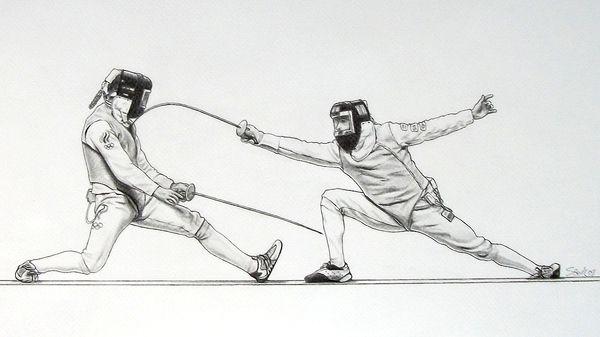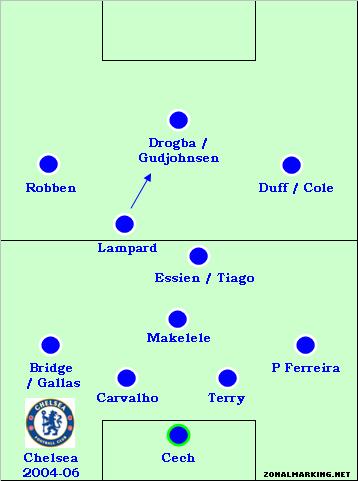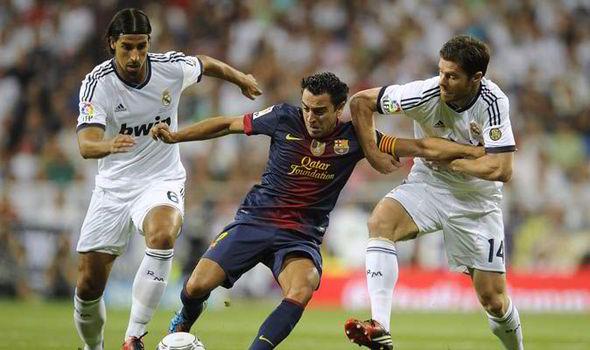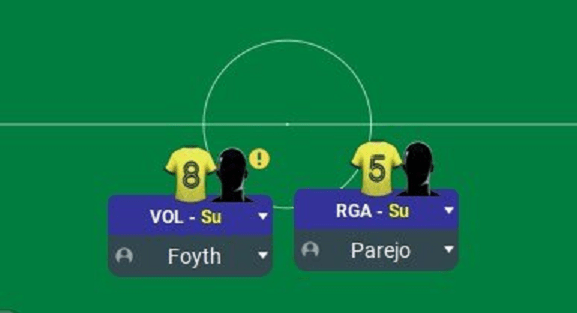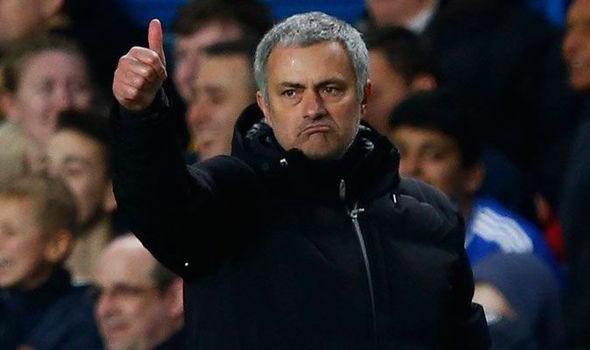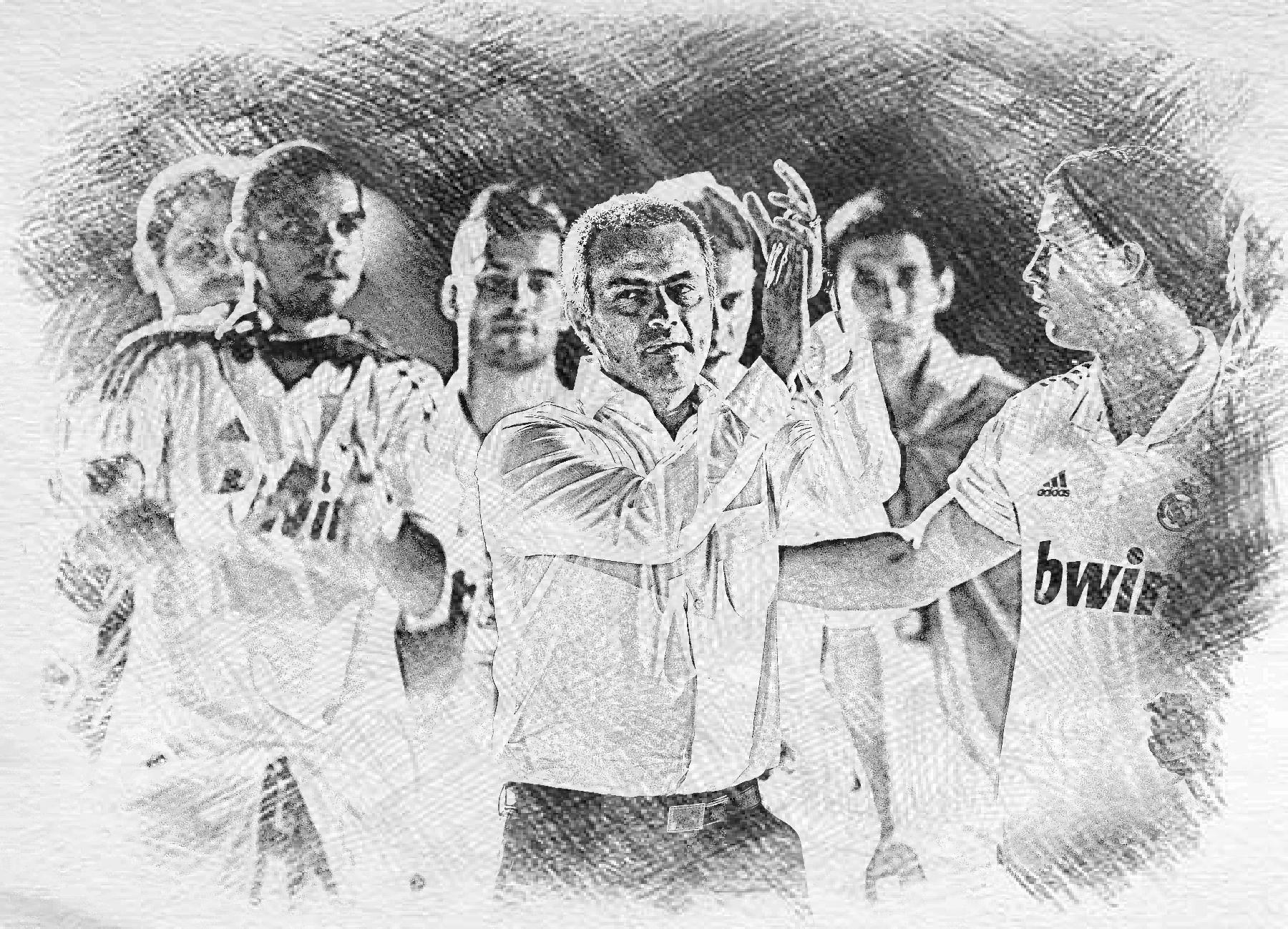
Pragmatic Football: Mid-Block Your Way To Victory in FM22
That is right. This article won’t be about my usual subject, Total Football. Instead I will be joining the Dark Side and discussing Pragmatic Football. And at the same time offering praise to Pragmatic Football’s grandmaster and high priest, Jose Mourinho. In that light another possible title for this article could have been “Understanding The Misunderstood Genius of Jose Mourinho”. My long-delayed tribute to the Special One.
Maybe getting safer and “more boring” are normal things that accompany aging. I don’t know that. But what I do know is that our tastes evolve over time. And sometimes that involves becoming more “safe”, or cautious if you will, in our approach to life. Some call it “wisdom”. Or maybe it is just the fear of failure which comes with greater experience. After-all, we have less time left. Thus we want to make sure to make the best of it and not mess up too much. For me this is happening with my approach to Football Manager tactics. In my old age I am turning into Jose Mourinho!
The more I play, the more I realize that I’m starting to value the same things that he does. Especially Mourinho’s obsession with achieving that perfect tactical balance and defensive solidity. Win clinically and consistently but with least possible goals conceded. Lately, it has become my obsession in FM22 to develop pragmatic, defensively-minded mid-block tactics.
In part, I wanted this article to be my unofficial introductory guide to developing sensible defensive-focused tactics in FM22. And trying to show you that a logical, “balanced” approach that does not involve the most intense level of pressing, highest defensive line and line of engagement could still be quite successful within the bounds of FM22 match engine. It is quite amazing how flexible the tactic creator in FM has gotten over the years. It’s much harder to cheese it with extreme “plug-and-win” tactics. AND most importantly it’s gotten to the point where if you can think of a logical system in your mind and lay out its basic elements on paper and then apply them in the game, then it’s pretty good chance that it might actually work!
Beautiful Game Versus Pragmatic Football – Is There Really A Difference?
What does it mean to play football “pragmatically”? Pragmatic football involves developing a tactical system that is wholly focused upon bolstering the strengths of one’s own team while countering the opponent’s weaknesses. It is especially about exploiting your opponent’s weaknesses in the most efficient and ruthless way. The key word probably being “efficiency” of play. There is also “lean meanness” to such pragmatic approach. It is about winning clinically with 1-0. It is about feeling the pride of that 15 goals conceded record for the whole season. Every successful manager has to be pragmatic at some point in his career.
Yet the idea of playing pragmatically is often misunderstood and associated with anti-football or even worse defensive “park-the-bus” football. The style of football that is more in the realm of the underdogs and minnows of the game. But true pragmatism is not reserved for the underdog. You will not see Mourinho-era Inter Milan parking the bus. Although they played very pragmatically when they achieved their historic tremble under Jose Mourinho’s management.
Mourinho’s Inter, Rafa Benitez’s Valencia, and Zidane’s Real Madrid – all giants of the game. Yet their success is the ultimate proof that pragmatic approaches can win you trophies. To win you need to score one goal and make sure that the other team does not do the same. So how did Mourinho do it? And more importantly how can we recreate his success, at least in the earlier part of his career, in FM22?
The Legacy of Helenio Herrera
I hate it when they ask about being fortunate. I don’t believe in good luck. When someone has won so much in twenty years, can it be fortune?
Helenio Herrera, when asked about being “lucky” in his long managerial career. By this time he had 16 domestic and international trophies to his name.
Jose Mourinho is no stranger to the concept of making your own fortune. Or of winning at all costs. In this, his football approach can probably be traced back over 50 years to Helenio Herrera. Helenio was another believer in the pragmatic tactical philosophy. Herrera created Catenaccio, a tactic that was similarly misunderstood by fans and pundits alike. Seen as ultra-defensive, when in fact its creator only wanted to play in the most efficient, counter-attacking way possible. Comparable to fencing. Helenio admired the precision and clinical nature of football. In his view, Best attack should be balanced by the best possible defence. So that the exact moment you score your first goal, you seal your opponent’s fate. Touche!
I will not discuss Herrera’s Catenaccio further. I already spent more than enough time writing about this revolutionary tactic in my earlier series, Zona Mista. It goes without saying that Helenio Herrera was a perfectionist in every sense of the word. Sometimes to the detriment of his players’ personal lives. But his approach also led Inter Milan into its most successful era. Remarkably Herrera’s record was only outmatched by Mourinho’s 4 domestic trophies and 1 Champions League title, 50 years later!
Common Threads – Creativity and Grit
Like Herrera, Jose Mourinho is considered to be one of the best “defensive” coaches of the modern era. The “defensive” label follows him around, even though like Herrera, Mourinho’s intention has never been to play defensively. Rather it is a side-effect of his chosen playing style. His stated intention has always been to play clinically and tactically. So it is no coincidence that Jose came back to manage in Italy again. He always considered Serie A to be the league where his tactics worked best. To Mourinho, Serie A is the most tactical league with matches often resembling complex chess games where every move matters.
Nevertheless, Mourinho has always built his teams around the defensively-solid core of goalkeeper, back four, and the double pivot midfield. These elements of his tactics never change. No matter which team or tactic, those have always been the common threads running through all his tactics. Whether we look at Porto’s 4-3-1-2, Chelsea’s 4-1-2-3 or the 4-2-3-1 at Real Madrid and Man United. The roles and player archetypes he uses for his back four and the midfield double pivot vary very little.
There have been some variations of course like with the 4-3-3 that I analyzed before.
Link to last Swiss Knife Thread.
But even in Jose’s 4-3-3 the common threads of his “pragmatic football” philosophy are there. The midfield trio included the more-defensively positioned double pivot paired with the attacking midfielder (Lampard) positioned in deeper midfield.
In practice it is still the same idea, the midfield needs to have both grit and creativity. For the most part the midfield is there to aid the defence in stopping the opposition from scoring. And then once the ball is won, the double pivot is required to recycle possession to a more creative player in either central or advanced midfield position. This works the same in both 4-3-3 and 4-2-3-1 variations of Mourinho’s tactics. To complement my previous posts which mostly focused on 4-3-3, in FM22 I will examine the 4-2-3-1 in more detail. Similarly to my FM21 attempt in Swiss Knife thread, I aim to create the most balanced (offensively and defensively) tactic. Hopefully, this will be possible in FM22.
From Inspiration to FM Recreation – The Tactical Introduction
Over the years Jose has used some truly formidable defensive midfield pairs. And always with the same creativity+grit combo. At Real Madrid we had Xabi Alonso playing as a deep-lying playmaker and Khedira as his ball-winning partner. At Chelsea, there were Makalele and Essien. Then there were Fabregas and Matic. All were part of Mourinho’s constant drive to achieve balance in both midfield and defence by pairing creativity and grit.
In attack, Mourinho’s tactics are all about switching plays, quick transitions and counters. Yet he is not one to favour direct football, just as his sides are not overly concerned with possession. If I were to describe Mourinho’s style, I would probably use word “Balanced”. Striving to achieve perfect balance in defence, midfield and attack. As such I try to build my own tactics to best reflect that in the game. So you will not see me using extreme pressing or passing (on either end of passing spectrum). Instruction-wise, I don’t want to shift the tactic into slow Tiki-Taka nor extreme Gegenpress territory.
Of course, Mourinho’s 2010-2013 Real Madrid was one of the most famous historic teams to employ 4-2-3-1 shape.
Some of my most distinct memories from the first decade of 2000s are incidentally associated with watching Mourinho’s teams create their magic. Breathtaking passes from Ozil to Ronaldo often come to mind when I think back to that historic Real Madrid team. Wingers like Ronaldo and Di Maria always brought the much-needed beauty to Mourinho’s Real Madrid. Especially when they were linked up by a very creative #10 like Mesut Ozil. At Chelsea as well. A timely cross into the box from Willian. A series of one-two passes between Hazard and Oscar that carved their opponents open. Those teams simply flowed and played some really beautiful football, with barely any wasted sideways or backwards passes.
While Mourinho doesn’t like possession or direct attack football, this never stopped his teams from racking up plenty of goals. This is largely due to the creativity, speed and power of the front three attackers. Cristiano Ronaldo had the best years of his illustrious career when playing on the left wing under Mourinho. From this position he scored 86 goals in 72 La Liga games between 2010 and 2012! The key to Real’s success was the freedom that the front four attackers, including Ronaldo, were granted due to the presence of a solid defensive base. Thus Ronaldo, Ozil, Benzema and di Maria could really come into their own, knowing that the midfield and defence had their backs.
Lightning fast wingers were coupled with a powerful Targetman (in both physical and creative sense) acting as the link in the final third). The physical presence of the Targetman like Didier Drogba was key because of his role as both a goal poacher and an aerial target/link for passes.
But the focus of this update are not the wingers or Drogba with his knack for distracting/terrorizing opposition defenders. As exciting as those elements in Mourinho’s 4-2-3-1 formation might seem. Rather, I’ll examine the midfield double pivot which, as previously-mentioned, is the common thread running through all Mourinho’s tactics. If I were to focus on a single aspect of 4-2-3-1 formation then the double pivot would be it. In my opinion it is by far the most important element in any “balanced” 4-2-3-1. It’s also the one element you should try to “get right” before you set-up any other roles in your formation.
Of course, Mourinho’s 2010-2013 Real Madrid was one of the most famous historic teams to employ 4-2-3-1 shape. But what made it so special? Other than the exciting game-changing stars like Ronaldo and Ozil of course. Well, the answer like in the midfield. The tactical core, and both the heart and the lungs, of any 4-2-3-1 tactic.
Firstly, I am going to make a disclosure that the following is by no means meant to be an exact recreation of a specific Mourinho tactic. So please don’t go after me if you believe that a role I used does not replicate exactly how Xabi Alonso played for example. That is never my intention with any historically-inspire tactics I write about. The key word being, inspiration.
In this case, I took my inspiration from a lot of Mourinho’s tactics over the years. As a tactical amalgam I took little bits from various teams that the Special One managed. The primary inspirations were Chelsea and Real Madrid but there are traces of Porto in there too. In general, I like how Mourinho puts the principles of solid defence and fast counters at the forefront. Especially going against the current expectation that world-class teams should dominate possession and attack constantly. In complete contrast to this, Mourinho showed us that sometimes best road to success is through a more patient and cautious “balanced” approach.
Tactic download link: https://ufile.io/bzitwvyq
“Mid-Block” Your Way To Victory
Jose Mourinho has never felt the need to keep possession for possession’s sake. Nor is he the one to preach the power of direct “hoofball”. His style always fell somewhere in the middle. The most balanced of balanced approaches. And to Mourinho, tactical balance means using a mid-block.
Mourinho is a staunch believer in using a solid mid-block defence (and sometimes going to low-block during Champions League games). Comfortably in the middle, he never skewed towards either extreme, of full-on defence or total attack. Neither favouring possession game nor directness. Rather his approach is all about tactical balance and flexibility. It is something I am trying to mimic in my own tactics in FM22.
Likewise, Mourinho has found it important throughout his career to tweak his formation to suit the opposition. As in the case of Chelsea’s 4-3-3 system, which had a clear advantage over most English teams of the time. The three-men midfield advantage to be exact. By adopting to his opponents, it allowed Mourinho to counter most teams in England which still stuck to the 4-4-2.
Most importantly, in all of his teams, Mourinho is never afraid to play to the strengths of his current players. Always using an expertly organized and disciplined shape to bring out the best of these strengths. Whether it was Porto’s 4-4-2 Diamond or Real Mardrid’s 4-2-3-1. Or Inter’s similarly potent 4-2-3-1 (arguably deeper DM version).
I believe that 2010-2012 Real Madrid holds the honour of being Jose Mourinho’s best counter-attacking team. And in my opinion, it stands as the high point of his tactics. Real played some of the best counter-attacking football in history. And they did this despite being the favoured team in the league. Once again Jose did not ask his players to press high but they pressed aggressively. They showed the power of staying behind the ball in a perfectly organized midblock. To this end, Mourinho employed no less than two defensive midfielders ahead of their already solid defence. Unlike at his previous clubs, at Real Madrid, Mourinho deployed a pair of two defensive midfielders: Sami Khedira and Xabi Alonso.
Of the two, Khedira was the more rounded jack-of-all trades who embodied the role of the deep box-to-box player (segundo volante if you will) and contributed in both defense and attack. Alonso was a player in the similar “Total Footballer” mold except that in addition to being supremely hardworking and versatile midfielder, Alonso was also regarded as one of the best deep-lying playmakers of his generation. In effect, both players contributed effective creatively and defensively, except Alonso was the clear playmaking orchestrator (regista). Pairing the two of them in the midfield was a brilliant move by Mourinho. While Khedira put all of his energy into chasing the ball and getting it to his midfield partner, Alonso used exceptional technique, excellent vision, and varied passing range to get forward to the attackers as soon as possible.
The combined hard work of Khedira and Xabi allowed Real Madrid’s front four to run wild. Real Madrid was unbeatable, scoring 102 and 121 goals in 2010/11 and 2011/12 respectively, easily outscoring Lionel Messi’s Barcelona.
In my opinion, La Liga’s Villareal is perfectly suited to play with Mourinho-style 4-2-3-1. Initially, Villareal possesses several possible DM pairings that can form a potent double pivot at the heart of your mid-block. My favourite partnership so far is Juan Foyth and Dani Parejo.
They might not be as good as Khedira/Xabi but still present some unique qualities not found at many “better”, bigger clubs. In fact, I chose El Submarino Amarillo as my test club specifically because of the presence of these two players so as to give the best possible testing environment to this tactical experiment.
Thus I think the best way to pay tribute to Mourinho’s tactics in FM22, is by playing in a very balanced manner, neither too defensive nor attacking. And most importantly to try keeping a very controlled mid-block defence, where the midfield and defence keep a close, compressed shape that does not press very high. But when the opposition enters into their area, they go into overdrive (due to the roles chosen) to aggressively win the ball back and transition it fast to their fast, creative forwards. Perfect parry and riposte football. And something that Helenio Herrera would be proud of.
Total Football is all about dominating your opponent. But domination is not only achieved by constantly attacking and controlling the ball possession. Total Control of the game also means smart defending that restricts your opponent’s chances of creating scoring opportunities. Thus in my books, Jose Mourinho’s vision of football is a truly special one. It is a style of football that is worth emulating and can be very satisfying to play. And as satisfying to write about. So this series is definitely not over as I look forward to put out more updates for you guys.
Thank you for reading! If you enjoyed this write-up, then please follow us @ Dictate The Game’s Facebook and Dictate The Game’s Twitter.
